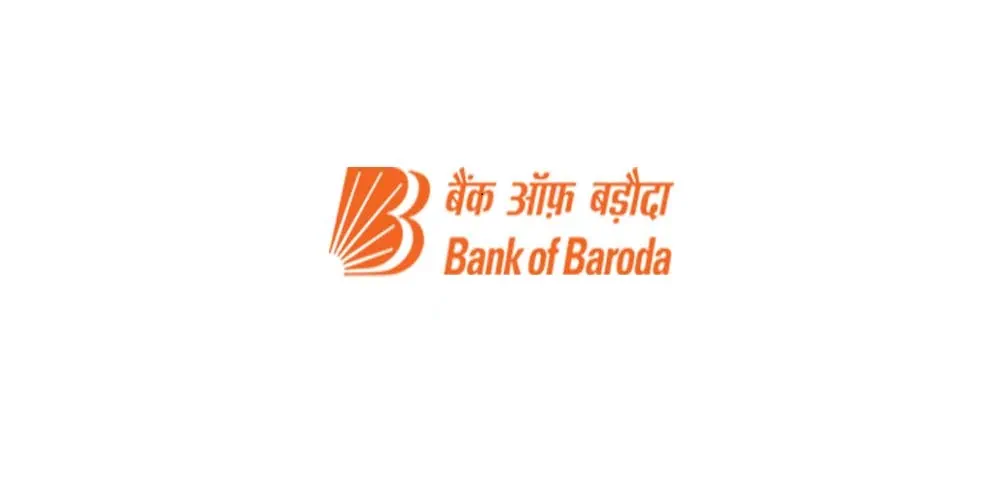
Complete Guide to Public Provident Fund (PPF) Account
22 May 2023

Table of Content
-
What is Public Provident Fund?
-
What is the Interest Rate on PPF?
-
How Does the PPF Account Work?
-
Features and Benefits of Investing in a PPF Account
-
How to Invest in PPF?
-
How to Withdraw Funds from a Public Provident Fund?
-
Can a PPF Account be closed before Maturity?
-
How to Transfer a PPF Account to another Branch or Bank?
-
Is it Possible to Take a Loan against PPF Account?
-
FAQs on PPF Account
What is Public Provident Fund?
The "PPF" in full form in banking, stands for Public Provident Fund, a popular long-term savings and investment instrument in India. This government-backed scheme enables individuals to build a secure retirement corpus or meet other financial goals while enjoying tax benefits under Section 80C.
This comprehensive guide offers all the essential information about Public Provident Fund (PPF) accounts in India, enabling investors to make informed decisions.
What is the Interest Rate on PPF?
The interest rate on PPF is determined by the Indian government and is subject to change every quarter. As of the last update in 2023, the PPF interest rate stands at 7.1% per annum, compounded annually.
How Does the PPF Account Work?
A PPF account is a long-term savings instrument designed to encourage individuals to save while enjoying tax benefits. The account has a minimum lock-in period of 15 years, with an option to extend the account indefinitely in 5-year blocks.
Individuals can deposit a minimum of Rs.500 and a maximum of Rs.1.5 lakh per financial year. The interest earned on the PPF account is tax-free, and the principal amount invested also qualifies for tax deductions under Section 80C of the Income Tax Act.
Example 1:
Let's assume Anil opens a PPF account and deposits Rs.50, 000 each year for the next 15 years. At an interest rate of 7.1% per annum, compounded annually, his total investment of Rs.7.5 lakh would grow to Rs.13,56,070 at the end of the 15-years. The interest earned during this period, Rs.6,06,070 would be tax-free.
Example 2:
If Anil decides to invest Rs.1 lakh per year for 15 years, with the same interest rate of 7.1% per annum compounded annually, his total investment of Rs.15 lakh would grow to Rs.27,12,139 at the end of the 15 years. The interest earned, Rs.12,12,139 would be tax-free.
Features and Benefits of Investing in a PPF Account
This section provides the Public Provident Fund scheme details.
- Tax Benefits: One of the most attractive features of a PPF account is the tax benefit it offers. Investments made in PPF qualify for tax deductions under Section 80C of the Income Tax Act, up to a maximum limit of Rs.1.5 lakh per financial year. Additionally, the interest earned on PPF investments is tax-free, making it an excellent choice for individuals seeking tax-efficient, long-term savings.
- Safe Investment: PPF is a government-backed scheme, which means that an investment is secure and carries minimal risk. The government guarantees both the principal amount invested and the interest earned, making PPF a highly reliable and safe investment option.
- Long-term Savings: PPF encourages long-term savings and financial discipline, as it comes with a minimum lock-in period of 15 years. This long-term investment horizon allows investors to build a substantial corpus for their retirement or other financial goals while benefiting from the power of compounding.
- Competitive Interest Rates: PPF offers competitive interest rates compared to other fixed-income investment options like fixed deposits. The interest rate on PPF is determined by the government and is subject to change every quarter.
- Loan Facility: At any time after the expiry of one year from the end of the year in which the initial subscription was made but before expiry of five years from the end of the year in which the initial subscription was made, the account holder may, apply in Form-2, to the accounts office for obtaining a loan consisting of a sum of whole rupees not exceeding twenty-five per cent of the amount that stood to his credit at the end of the second year immediately preceding the year in which the loan is applied for.
- Partial Withdrawal Facility: Any time after the expiry of five years from the end of the year in which the account was opened, the account holder may, avail withdrawal by applying in specified form, from the balance to his credit, an amount not exceeding fifty per cent of the amount that stood to his credit at the end of the fourth year immediately preceding the year of withdrawal or at the end of the preceding year, whichever is lower. Provided further that the facility of withdrawal may be availed only once in a year only from the accounts which have not become discontinued.
- Extension of Account: PPF accounts can be extended indefinitely in 5-year blocks after the initial 15-year lock-in period. Investors can choose to extend the account with or without making additional contributions, allowing them to continue enjoying the benefits of PPF investments.
- Nomination Facility: PPF account holders can nominate one or more individuals who will receive the account proceeds in the event of the account holder's death. This ensures that the funds are easily accessible to the nominee(s) without going through a lengthy legal process.
- Investment Flexibility: Investors can deposit a minimum of Rs.500 and a maximum of Rs.1.5 lakh per financial year, in lump-sum or in instalments. This flexibility allows investors to manage their savings and investments according to their financial situation and goals.
- Wide Availability: PPF accounts can be opened at post offices and various public and private sector banks across India, making them easily accessible to a vast majority of the population.
How to Invest in PPF?
How to Invest in PPF Online?
- The investor can log in to BOB World.
- Click on Invest Option available at the top.
- Navigate to Public Provident Fund Section- “Open Now” option.
- The investor chooses the amount they wish to invest (minimum contribution is Rs.500 per year).
- They select the frequency of deposits (monthly, quarterly or yearly).
- The investor confirms the transaction and completes the payment process.
How to Open a PPF Account Offline?
- Visit your nearest Bank of Baroda branch.
- Fill out the PPF account opening form and provide the necessary documents, including ID proof, address proof, and photographs.
- Deposit the initial amount and collect the PPF passbook.
How to Withdraw Funds from a Public Provident Fund?
Any time after the expiry of five years from the end of the year in which the account was opened, the account holder may, avail withdrawal by applying in specified Form, from the balance to his credit, an amount not exceeding fifty per cent of the amount that stood to his credit at the end of the fourth year immediately preceding the year of withdrawal or at the end of the preceding year, whichever is lower. Provided further that the facility of withdrawal may be availed only once in a year only from the accounts which have not become discontinued.
Also Read - Calculate Public Provident Fund (PPF) Maturity Amount Online
Can a PPF Account be closed before Maturity?
Premature closure of PPF accounts is allowed only under specific circumstances, such as a serious medical emergency, higher education needs or change in resident status. A 1% interest penalty is applicable, and the account must have completed at least five financial years from the date of account opening.
How to Transfer a PPF Account to another Branch or Bank?
- Visit the bank branch where the existing PPF account is held.
- Fill out the PPF account transfer form and provide the necessary documents.
- The existing bank will forward the application to the new bank or branch.
- Once the transfer is complete, individuals will receive a new PPF passbook from the new branch or bank.
Is it Possible to Take a Loan against PPF Account?
Yes, At any time after the expiry of one year from the end of the year in which the initial subscription was made but before expiry of five years from the end of the year in which the initial subscription was made, the account holder may, apply in specified Form, to the accounts office for obtaining a loan consisting of a sum of whole rupees not exceeding twenty-five per cent of the amount that stood to his credit at the end of the second year immediately preceding the year in which the loan is applied for.
FAQs on PPF Account
Q. How many times can I deposit in PPF in a month?
You can make deposits in your PPF account any no. of times, with a maximum limit of Rs. 1,50,000 in a financial year.
Q. What is the minimum lock-in period for a PPF investment?
The minimum lock-in period for a PPF investment is 15 years, with an option to extend it indefinitely in 5-year blocks.
Q. Is PPF a good investment option?
Yes, PPF is considered a good long-term investment option due to its safety, tax benefits, and guaranteed returns, making it suitable for risk-averse investors and those looking to build a retirement corpus.
Q. Can I invest in PPF if I am not an Indian resident?
No, Non-Resident Indians (NRIs) cannot open new PPF accounts. However, if a resident Indian becomes an NRI after opening a PPF account, they can continue to maintain it until the maturity period.
Q. Can I open a joint PPF account?
No, joint PPF accounts are not allowed. PPF accounts can only be opened in the name of an individual.
Q. Can I extend my PPF account after the maturity period?
Yes, you can extend your PPF account after the 15-year maturity period indefinitely in 5-year blocks, with or without making additional contributions.
Q. Can I open a PPF account for my child?
Yes, you can open a PPF account for your child (minor). However, the combined investment limit for your account and your child's account cannot exceed Rs.1.5 lakhs per financial year.
Q. Is the interest earned on PPF taxable?
No, the interest earned on PPF investments is tax-free. This makes PPF an attractive investment option for individuals seeking tax-efficient, long-term savings.
Popular Articles
Related Articles










-
Disclaimer
The contents of this article/infographic/picture/video are meant solely for information purposes and do not necessarily reflect the views of Bank of Baroda. The contents are generic in nature and for informational purposes only. It is not a substitute for specific advice in your own circumstances. Bank of Baroda and/ or its Affiliates and its subsidiaries make no representation as to the accuracy; completeness or reliability of any information contained herein or otherwise provided and hereby disclaim any liability with regard to the same. The information is subject to updation, completion, revision, verification and amendment and the same may change materially. The information is not intended for distribution or use by any person in any jurisdiction where such distribution or use would be contrary to law or regulation or would subject Bank of Baroda or its affiliates to any licensing or registration requirements. Bank of Baroda shall not be responsible for any direct/indirect loss or liability incurred by the reader for taking any financial decisions based on the contents and information mentioned. Please consult your financial advisor before making any financial decision.
Calculating PPF Maturity Amount: Formulas, Compounding & Calculator
With the dual benefits of saving taxes and accumulating retirement funds, PPF remains a preferred savings method. An investor needs to open an account under this scheme to derive these benefits.
How to Avail Loan Against Your PPF Account
Public Provident Fund (PPF) is a long-term investment with a tenure of 15 years that gives the investor a fixed income that is risk-free and tax-free. The account can be opened with a minimum balance of Rs.500 to a maximum deposit of Rs.1, 50,000 per year. It inculcates the habit of saving and planning for long-term goals. It also has a provision for availing loan against the PPF account investment for the short-term needs of the investor.

